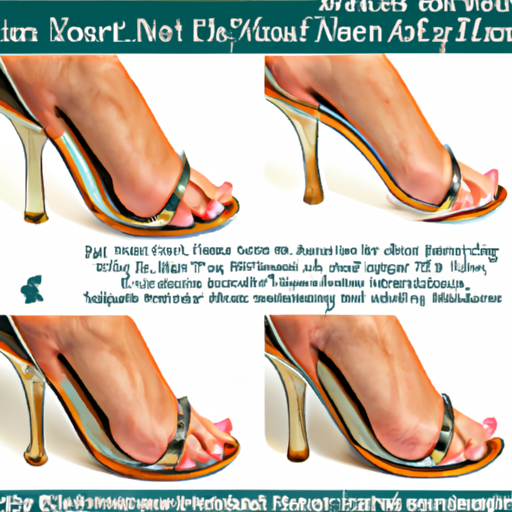
You’ve heard it before – nail fungus can be a pesky and persistent problem, leaving you feeling self-conscious and frustrated. But fear not, because we’ve got the solution you’ve been searching for! With our comprehensive guide on “How to Treat Nail Fungus and Prevent It from Coming Back,” you’ll discover proven methods and tips to effectively banish nail fungus once and for all. Say goodbye to embarrassing nail infections and hello to healthy, beautiful nails!
1. Understanding Nail Fungus
Nail fungus, also known as onychomycosis, is a common condition that affects many individuals. It occurs when fungi, such as dermatophytes, invade and infect the nails. This can happen due to a variety of reasons, including poor foot hygiene, wearing closed-toe shoes for extended periods, or walking barefoot in public places like swimming pools and gym showers.
1.1 What is Nail Fungus?
Nail fungus is a fungal infection that primarily affects the toenails, although it can also occur in the fingernails. It is characterized by discolored, brittle, and thickened nails. The affected nails may appear yellow, brown, or white, and there may be debris or a foul odor present. In some cases, the nails may become distorted or detached from the nail bed.
1.2 Causes of Nail Fungus
Several factors contribute to the development of nail fungus. Fungi thrive in warm, moist environments, making sweaty socks and shoes a breeding ground for them. Additionally, injuries to the nails, poor circulation, weakened immune system, and certain medical conditions, such as diabetes, can increase the risk of developing nail fungus.
1.3 Signs and Symptoms
Recognizing the signs and symptoms of nail fungus is crucial for early detection and treatment. Common indicators include thickened nails, yellowish or brownish discoloration, brittleness, crumbling or jagged edges, and a change in nail shape or texture. Some individuals may experience pain or discomfort, especially if the infection progresses.
1.4 Risk Factors
Certain factors increase your chances of developing nail fungus. Individuals who have a family history of nail fungus, a weakened immune system, or frequent exposure to moist environments are at a higher risk. Additionally, those who have diabetes, wear artificial nails, or have a history of athlete’s foot are also more susceptible to nail fungus.
1.5 When to See a Doctor
If you suspect that you have nail fungus, it is best to consult a healthcare professional. They can evaluate your condition and provide an accurate diagnosis. Seeking medical attention is particularly important for individuals who have diabetes or a compromised immune system, as nail fungus can lead to serious complications in these cases.

This image is property of images.unsplash.com.
2. Treating Nail Fungus
Fortunately, there are various treatment options available for nail fungus. The choice of treatment depends on the severity of the infection and the individual’s overall health.
2.1 Over-the-Counter Treatments
Over-the-counter antifungal creams, ointments, and nail polishes can be an effective first line of treatment for mild cases of nail fungus. These products typically contain ingredients like clotrimazole or terbinafine, which help eliminate the fungus. It is important to follow the instructions carefully and apply the product consistently for optimal results.
2.2 Prescription Medications
For more severe cases, prescription medications may be necessary. Oral antifungal medications, such as terbinafine and itraconazole, may be prescribed by a doctor. These medications are taken over a period of several weeks or months and can help eliminate the fungus from within the body. Your doctor will determine the most appropriate medication and dosage based on your specific situation.
2.3 Natural Remedies
Some individuals prefer to explore natural remedies for treating nail fungus. While there is limited scientific evidence to support their effectiveness, some natural remedies, such as tea tree oil, vinegar, and coconut oil, have shown potential antifungal properties. It is advisable to consult with a healthcare professional before using natural remedies, as they may not be suitable for everyone.
2.4 Laser Therapy
Laser therapy is a newer treatment option for nail fungus. This procedure involves using laser energy to target and destroy the fungus without causing harm to the surrounding tissue. Multiple sessions may be required, and results may vary. It is recommended to consult with a healthcare professional who specializes in laser therapy to determine if this treatment is suitable for you.
2.5 Surgical Treatment Options
In severe cases where the nail fungus does not respond to other treatments or causes significant discomfort, surgery may be considered. Surgical options include temporarily or permanently removing the affected nail to allow for the application of antifungal medications directly to the nail bed. These procedures are generally performed by a podiatrist or dermatologist and require careful post-operative care.

This image is property of images.unsplash.com.
3. Preventing Nail Fungus
Prevention is better than cure when it comes to nail fungus. By taking some simple precautions, you can reduce your risk of developing this common infection.
3.1 Proper Nail Care
Maintaining good nail hygiene is essential in preventing nail fungus. Keep nails clean and dry, and trim them regularly, ensuring they are not too short or too long. Avoid cutting or tearing the cuticles, as this can create an entry point for fungi. Use clean and sanitized tools for nail grooming to reduce the risk of infection.
3.2 Maintain Good Foot Hygiene
In addition to nail care, it is important to practice good foot hygiene. Wash your feet regularly with soap and water, especially after being in public spaces or engaging in activities that cause excessive sweating. Dry your feet thoroughly, paying attention to the areas between the toes, as fungi thrive in moisture.
3.3 Avoiding Contamination
To minimize the risk of contracting nail fungus, it is essential to avoid sharing personal items, such as towels, socks, shoes, and nail clippers, with others. Fungi can easily spread through contaminated objects. Additionally, avoid walking barefoot in public areas, especially around swimming pools, locker rooms, and communal showers.
3.4 Protective Measures for Public Spaces
When using public facilities, consider wearing shower shoes or sandals to protect your feet from contact with contaminated surfaces. These simple precautions can significantly reduce the risk of coming into contact with fungi that can cause nail infections.
3.5 Addressing Athlete’s Foot Quickly
Athlete’s foot, a common fungal infection that affects the skin between the toes, can increase the risk of developing nail fungus. If you notice any symptoms of athlete’s foot, such as itching, redness, or cracking skin, treat it promptly to prevent it from spreading to the nails. Over-the-counter antifungal creams or powders can help alleviate the symptoms and prevent further infection.

This image is property of images.unsplash.com.
4. Lifestyle and Home Remedies
In addition to medical treatments and preventive measures, there are lifestyle and home remedies that can help manage nail fungus.
4.1 Regularly Clean and Dry Your Feet
Daily cleaning of your feet is crucial in preventing further fungal growth. Use mild soap and warm water to cleanse your feet, paying extra attention to the infected nails. After washing, thoroughly dry your feet, especially the areas between the toes, as moisture can contribute to fungal growth.
4.2 Wear Breathable Shoes and Socks
Choose shoes made of breathable materials, such as leather or mesh, to allow air circulation and reduce moisture buildup. Opt for moisture-wicking socks that keep your feet dry and prevent sweat accumulation. Avoid tight-fitting shoes and nylon or synthetic socks, as they can trap moisture and create an ideal environment for fungal growth.
4.3 Apply Antifungal Nail Polish
Antifungal nail polish can be used as a preventive measure or as an adjunct to other treatments. These polishes contain antifungal agents that help inhibit fungal growth and protect the nails from infection. Apply the nail polish as directed and consider using a base coat to enhance its adhesion and effectiveness.
4.4 Use Antifungal Powder in Shoes
To keep your shoes free from fungal spores, sprinkle antifungal powder or spray inside them regularly. These products can help kill existing fungi and prevent reinfection. It is important to apply the powder evenly and allow it to settle before wearing the shoes to ensure maximum efficacy.
4.5 Change Socks Regularly
Moisture can accumulate in socks, providing an environment conducive to fungal growth. Change your socks at least once a day, or more frequently if your feet perspire heavily. Opt for clean, dry socks made of moisture-wicking materials to keep your feet dry and minimize the risk of fungal infection.

5. Managing Risk Factors
In addition to adopting preventive measures and lifestyle changes, managing certain risk factors can help reduce the likelihood of developing nail fungus.
5.1 Keep Feet Dry
Moisture is the enemy of healthy nails. Always dry your feet thoroughly, especially between the toes, after bathing or swimming. Consider using a hairdryer on a cool setting to ensure complete drying. Avoid wearing damp shoes or socks, as they can create an ideal environment for fungi to thrive.
5.2 Avoid Sharing Personal Items
Sharing personal items, such as towels, socks, shoes, and nail clippers, can contribute to the spread of fungal infections. To minimize the risk, use your own personal items and avoid borrowing or lending them to others.
5.3 Disinfecting Nail Tools
If you frequently visit nail salons for manicures or pedicures, ensure that the tools used are properly sterilized or bring your own tools. It is essential to disinfect nail clippers, files, and other utensils to prevent the transmission of fungal infections.
5.4 Treating Skin and Foot Injuries Promptly
Proper wound care is crucial in preventing nail fungus. If you sustain any injuries or develop cuts, blisters, or breaks in your skin, clean them promptly and apply an antiseptic ointment to prevent infection. Promptly addressing any skin or foot injuries can prevent fungi from entering and causing nail infections.
5.5 Maintaining a Healthy Immune System
A strong immune system can help fight off fungal infections and reduce the risk of nail fungus. Adopt a healthy lifestyle by eating a balanced diet, getting regular exercise, managing stress levels, and getting adequate sleep. If you have any underlying medical conditions that weaken your immune system, work closely with your healthcare provider to manage them effectively.
In conclusion, understanding nail fungus is important in order to effectively treat and prevent this common condition. By following proper nail care techniques, maintaining good foot hygiene, and managing risk factors, you can minimize your chances of developing nail fungus. It is recommended to consult with a healthcare professional for an accurate diagnosis and personalized treatment plan if you suspect you have nail fungus. With the right approach, you can improve the health and appearance of your nails and prevent nail fungus from coming back.
